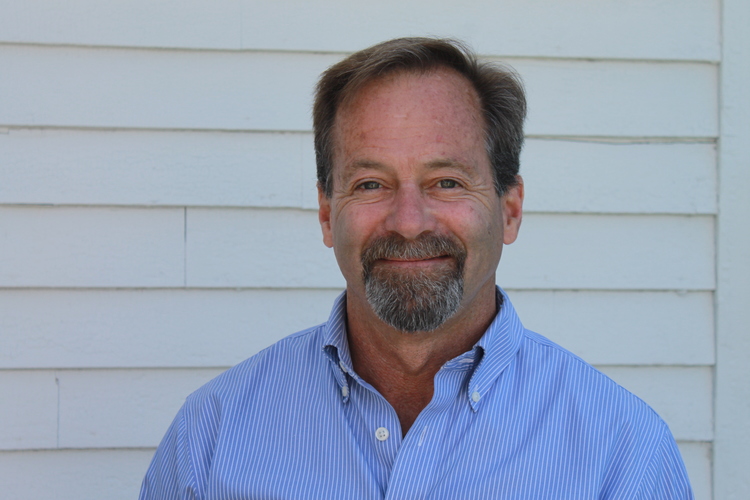Jerald is a board-certified prosthetist and orthotist (American Board for Certification, ABC) with 20 years of experience in the field. Jerald has an extensive background in engineering and computer-aided design and has also studied graphics, sculpture and pottery. Jerald did his undergraduate work at Cornell University and graduated cum laude with a degree in Physics and Cognitive Studies. He has also been a guest lecturer for the University of New England's PhD Physical Therapy program.
In addition to seeing patients in their clinic, Jerald is very involved in research and development and has invented a bracing treatment for infants with clubfoot that is in use around the world. He is constantly working to bring new, patient-inspired, solutions to reality.

Photos courtesy of Cunningham Prosthetic Care
The Cunningham Brace was designed by Jerald Cunningham, who runs his own clinic in the US. It works using a firm strap around the thigh and a spring that holds the brace up against the bottom of the foot. This means that the brace is always gently stretching your baby’s foot into the correct position, in a similar way that a therapist applies manipulation.
Jerald developed the brace at the request of an orthopaedic surgeon and colleague who saw how distressing the boots and bar process was for many children and parents. Jerald has worked on the design for more than 10 years, tweaking as he goes, based on x-ray evidence after every patient fitting.
The big difference is that the Cunningham Brace is flexible and only fitted to the affected leg. This allows for the sort of dynamic movement you’d expect in babies, such as crawling, rolling and standing. Greater activity helps build a more developed muscular system – particularly calf muscles. Anecdotally we’ve seen a lot more symmetry in calf muscles using the Cunningham Brace than boots and bar. And because it’s a different kind of mechanism we don’t have to strap the feet up so tightly, which reduces issues such as blistering on the legs.
At your first appointment we will take measurements and fit your child with their first Cunningham Brace. We’ll show you how to put the brace on and take it off and book you in for a review a week later. We then schedule a series of reviews as your child grows to check progress and ensure that your child is maintaining the correction. This can be done in the clinic or virtually via a system like Skype. There are lots of simple things we can adjust to encourage correct development.
The Cunningham Brace is made from a series of measurements that we can either take in the clinic or help you to take during a virtual appointment. We hold a range of Cunningham braces in stock that we can adapt to the correct size and foot type of your baby. This process normally takes a few hours unless your child has a size that is out of the normal range or we do not have it in stock.
It depends on your child and the complexity of their case. On average, though, we’ll be looking to review your baby’s progress once a month over the course of treatment.
Treatment lasts about two years – this is around one-third of the time other methods require. In the first year, your baby will wear the brace for 23 hours a day – compared with boots and bar which can only be done for three months. This means we can help correct your baby’s foot while their tissue and bones are at their softest and most compliant. Once your baby is standing, they will only wear the brace during nighttime and naps.

Join The London Orthotic Consultancy in celebrating Cerebral Palsy Awareness Day on March 25th. Learn just how important expert orthotic care is in enhancing mobility, independence, and quality of life for children and adults with cerebral palsy.

Introducing the Agilik™ smart orthosis, a cutting-edge, powered knee orthotic now available in the UK through the London Orthotic Consultancy. Unlike traditional KAFOs or heavy exoskeletons, the Agilik™ provides dynamic knee assistance and offers real-time support, reducing fatigue and improving posture. This pioneering, modern technology can help children and adults with lower limb weakness walk more efficiently and naturally. We are honoured to be selected as the exclusive paediatric specialist centre in the UK for the Agilik™ device.

When Sophie noticed her baby Max had a persistent flat spot on his head, she was told it would resolve naturally—but it didn’t. Seeking a second opinion led her to the London Orthotic Consultancy, where Max was diagnosed with severe plagiocephaly.

A little more than four years after the LOCband Lite's launch, we're proud to have successfully treated our 250th helmet therapy patient at our Romford clinic using our cutting-edge 3D-printed cranial band. After five months of treatment, her final scan showed that her asymmetry had decreased from 12 mm to 3 mm.

Sky News published an article this month quoting scientists at Southmead Hospital who claimed there was a lack of research into flat head syndrome and its treatment with cranial remoulding (helmet) therapy. This is our response.

With our non-surgical treatment plan, Alex achieved 100% chest correction in just two years. His treatment involved a combination of dynamic chest compressor and vacuum bell therapy treatment to address his pectus excavatum and rib flaring.

Learn how a custom carbon fibre AFO helped Gill regain mobility and comfort despite complex challenges from shin bone (tibia) removal. We created a truly tailored orthotic solution made from pre-preg carbon fibre at our Cambridge clinic.

Discover how bespoke orthotics and the OSKAR program with Elaine Owen transformed Archie’s life with cerebral palsy quadriplegia, helping him avoid a wheelchair and achieve greater mobility.